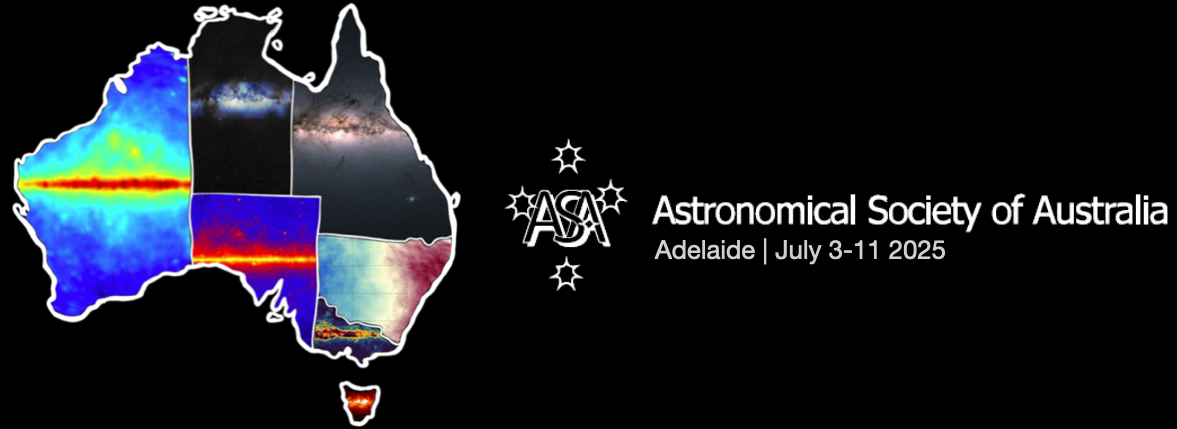The radial migration and chemical evolution of the stars in the Milky Way disc can be studied through the dynamics, distribution and chemical abundances of open clusters. With the latest GALAH DR4 catalogue, we are now able to work with refined stellar parameters and up to 30 elemental abundances per star. I will present my work on obtaining a revised catalogue of open cluster stars, with 76...
The SDSS-V Local Volume Mapper (LVM) survey is delivering unprecedented spectroscopic information about our galaxy, enabling detailed studies of star formation and galaxy evolution across a wide range of spatial scales. LVM is uniquely positioned to map energy and momentum transport, chemical abundances, and the thermal structure of the interstellar medium, down to 0.05 parsecs. Weak emission...
Now more than 150 years old, the technique of aperture masking interferometry has played a crucial role in high angular resolution astronomy, allowing ground-based observatories to achieve sub-seeing-limited precision. Today, when complemented with adaptive optics, aperture masking continues to provide high-resolution observations, pushing beyond the classical diffraction limit. However,...
I present SPICE, a framework designed to efficiently generate time-series synthetic spectra for stars with surface inhomogeneities such as spots, binary occultation, abundance anomalies, radial pulsations, and non-spherical symmetry. These effects have been studied in photometry, interferometry, and spectroscopy before, but there's an unfilled niche for tools capable of processing and fitting...
The number of low Earth orbit (LEO) satellites is increasing, and they are having a noticeable impact on the quality of a large range of astronomical data. We use archival data from the Multi Unit Spectrographic Explorer (MUSE) to quantify the effects of satellites on the datacubes. MUSE is an integral field unit (IFU) so it captures a spectrum at every pixel in the field of view. Using the...
Accurate localisation of Fast Radio Bursts (FRBs) is essential for identifying their host galaxies, constraining progenitor models, and employing FRBs as precise cosmological probes. For extragalactic FRBs, particularly those at higher redshifts (z > 1), sub-arcsecond astrometry is required to robustly associate them with host galaxies and disentangle contributions to dispersion and scattering...
The growing flood of gravitational lensing data in the era of big-data astronomy brings both opportunities and challenges—particularly in modeling efficiency and the reliability of inferences from a given dataset.
In this work, we reconstruct 16 strong lens candidates using multi-band PISCO data from the Magellan Telescope, employing a scalable pipeline that jointly models all four bands (z,...
The advent of next-generation telescope facilities brings with it an unprecedented amount of data, and the demand for effective tools to process and classify this information has become increasingly important. There have been many applications of machine learning (ML) in this context, however ML can be computationally expensive and often requires manually curated training sets. This work...
Galaxy distances measured using standard methods like the Tully-Fisher relation and the Fundamental Plane have relative errors of 20-30%. Beyond a few tens of Mpc, this means that the errors in galaxy peculiar velocities are generally much larger than the peculiar velocities themselves. It is therefore highly desirable to find ways to reduce the uncertainties in such distance estimates. We...
Flying on board the James Webb Space Telescope (JWST) above Earth's turbulent atmosphere, the Aperture Masking Interferometer (AMI) stands as the highest resolution optical interferometer ever placed in space.
However, imaging is severely limited by non-linear detector systematics, particularly charge migration known as the brighter-fatter effect (BFE).
Conventional interferometric Fourier...

